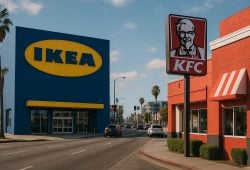-
Optinmontser says that the US is the biggest online shopping market, with an average revenue of 1,804 dollars per customer
-
Ecommerce has a bigger rate of penetration among the female population, at 72 percent
-
According to two out of three mobile users, they have browsed products in their smartphones for fun
The shopping experience, specially in developing and advanced economies, has migrated in great part to the web. Brands like Oreo and McDonald’s are launching new lines of swag, and distributing them via their own online pages. Traditional financial institutions have accepted the changes brought by ecommerce, mainly in response to the influence of fintech startups. And now, companies are discovering ways to boost their marketing efforts through this very environment.
Of course, there are several challenges in the future for online shopping. According to Ice Cube Digital, several small businesses still struggle with logistics. Meanwhile, Ecommerce training says that it’s still difficult to retain costumers in the long run. And The Fashion Network believes that, sometimes, is almost impossible to meet the audience’s high expectations. At the same time, some players in the industry that believe there are attractive and untapped alternatives.
Looking for another online shopping experience
Even while the ecommerce has its fair share of advantages, it also has barriers. Acquire points out that, most of the time, the customer experience is not enough. Not only there are few brands that solved the problem of omnichannel-contact. Maintaining loyalty of past buyers, even just convincing them of getting to the end of the sales funnel, has proven difficult. In an interview with Merca 2.0, Tim Weingarten, Head of Shopping Product in Pinterest, presents another way:
The market has not really changed much in 20 years. The basic functionality, the purpose of those sites is still the same. Because they have not evolved much, they have left a vacuum for the rest of the tech landscape. We are now presenting a new shopping experience. Only we have the data to personalize to your taste. Ecommerce may try to adjust to customers, but only consider past purchases. We are accounting for more, and building something differentiated.
The intersection between social media and the sales funnel
Pinterest is not the only platform in this market looking forward to develop in the online shopping experience. It has been months since brands as Instagram, Facebook and Snapchat have added these capabilities. And Weingarten believes that it’s an evolution of regular retail.
In a physical store there is an element of serendipity and joy rarely seen online. The feeling of discovering something brand new. I believe Pinterest can bring back this sentiment to online.
There is also the advantage of easily moving around the shopping process. The Pinterest expert points out that platforms like Google and Amazon are a bit further in the sales funnel. And while they try to move up this consumer journey, it has been difficult to do so. However, their website is already at the discovery phase. Here, he says, is easy to add more steps and allow the users to go through even further into the final step: actually buying the product itself.
Online shopping and Mexico
There is a final consideration. In several industries, the country lags behind market leaders like the United States (US) and Europe. This situation applies to cybersecurity, vegan meat and even the most ambitious online content launches. However, according to Weingarten, the exact opposite is true for this new sales funnel experience. Mexico is, as the own Head of Shopping Product of Pinterest says, one of the most crucial markets for this kind of consumer projects.
I expect that, since half our users, and our fastest growing communities, are outside US and in places like Mexico, when we build these experiences we will first think in these markets. We use the States for product market fit, to make sure the shopping tools work. Now that they are functional, we want to roll them out as fast as possible to Latin America and other key regions.
Want to know more of Weingarten’s vision on shopping? Watch the rest of the interview here:









